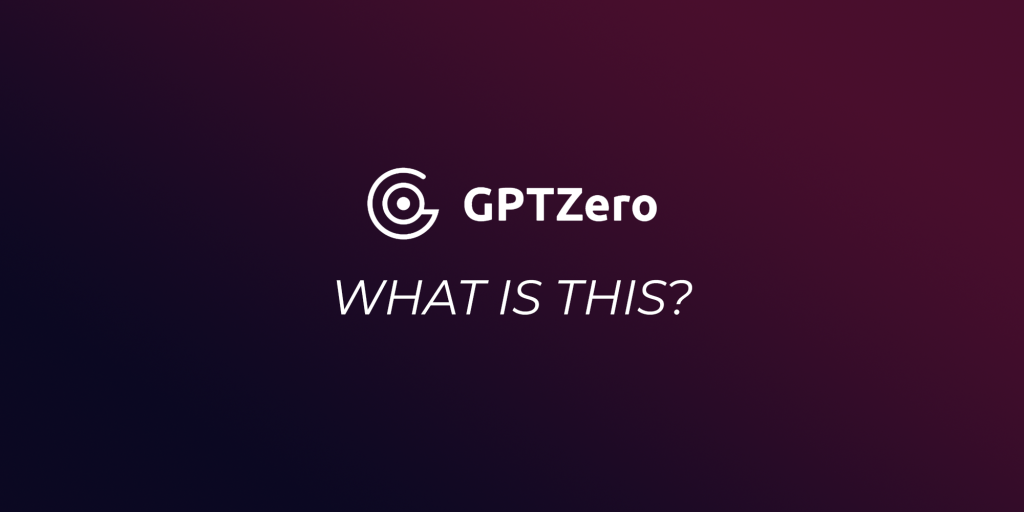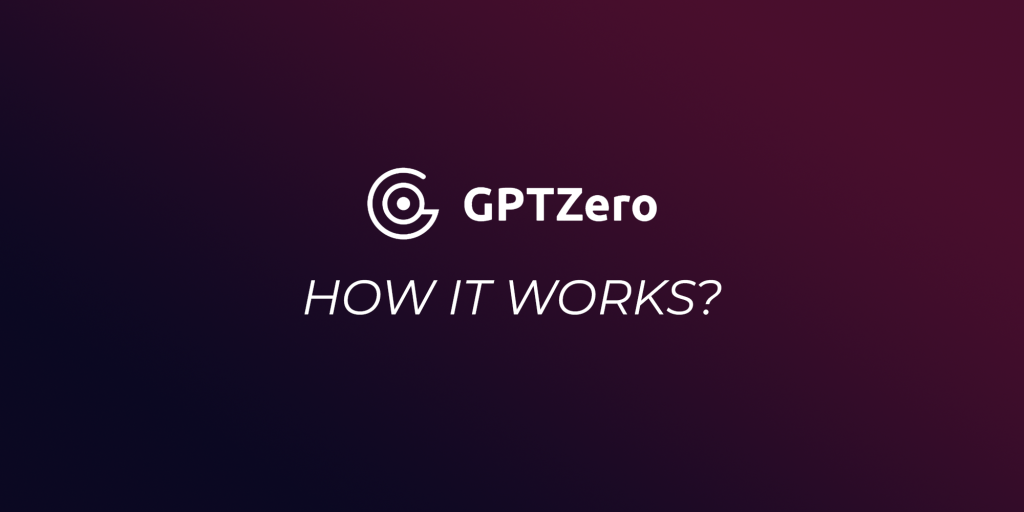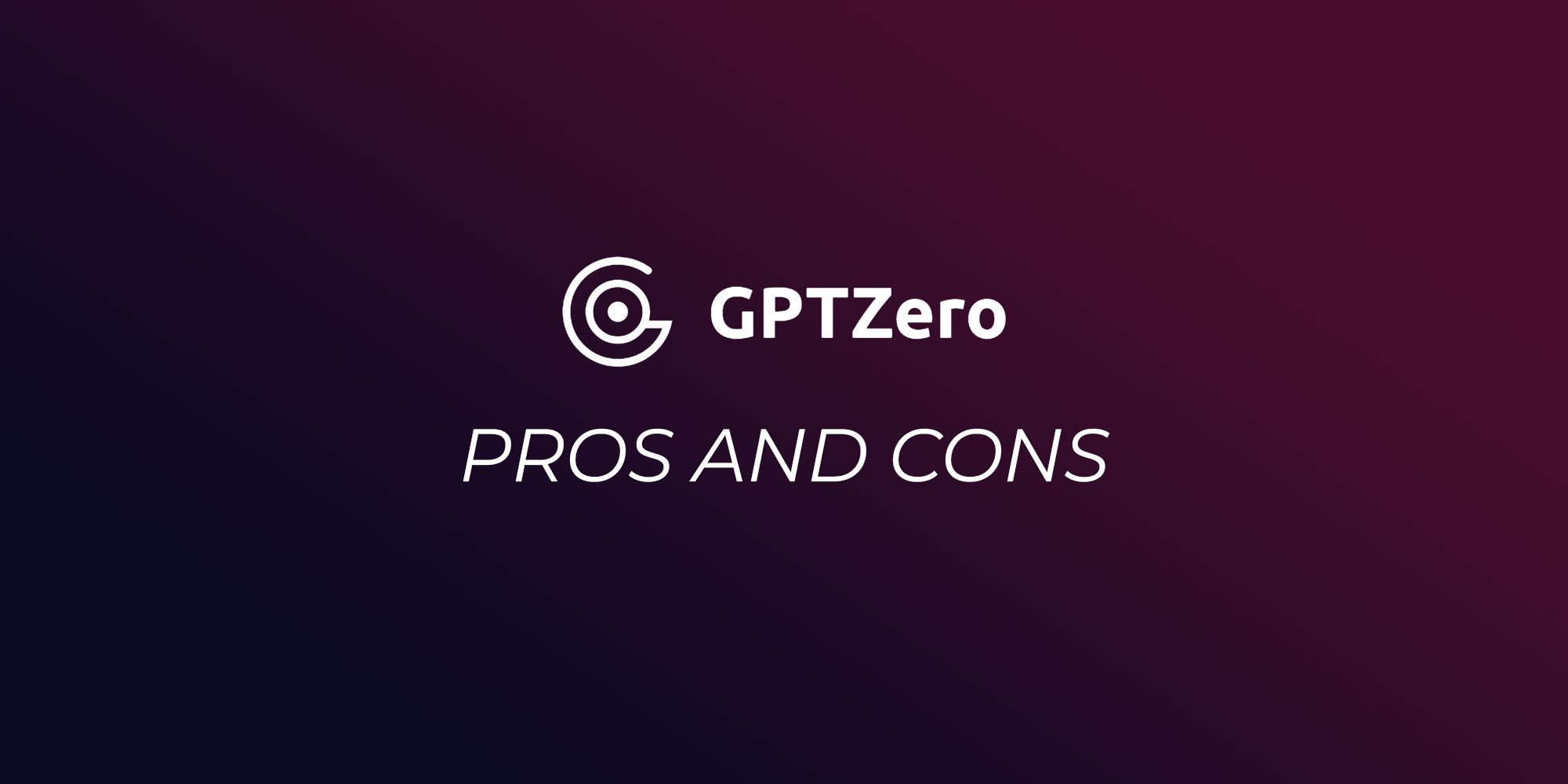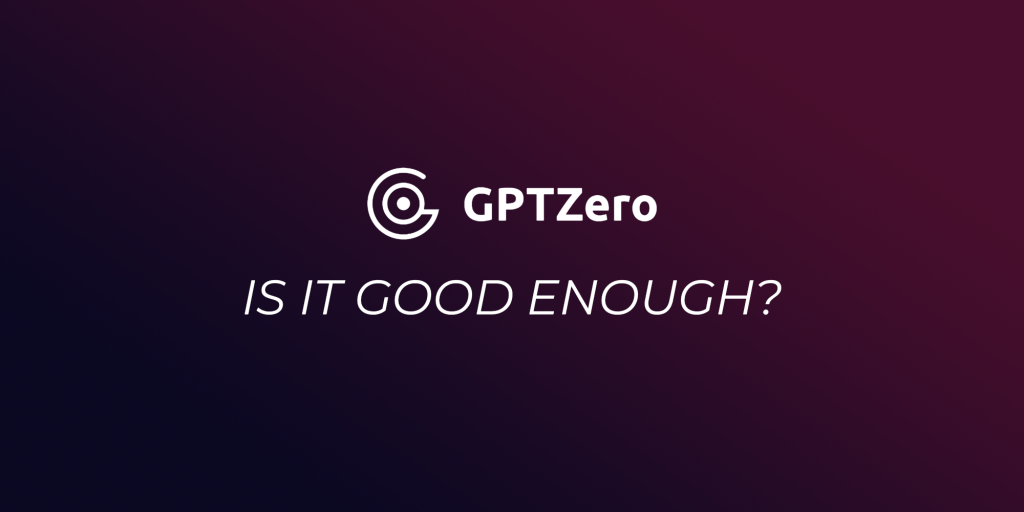GPTZero is a tool that tells us if ChatGPT wrote a text. People in schools and colleges started to worry: does zero gpt work and how accurate is gpt zero?
A while back, a student from Princeton named Edward Tian talked about a new tool named GPTZero online. This tool helps figure out if a text was written by a person or a computer.
It works a bit like some other tools we know, like Originality and TurnItIn. But GPTZero looks really closely at the text to decide if it was made by a computer or not.
So, how does GPTZero do this? Well, it checks how easy a text is to guess. If a computer can guess it easily, then it’s probably made by a computer.

Edward Tian started GPTZero on January 3, 2023, for a school project. In just 5 months, a lot of people – 1.2 million – started using it! And now, 2.5 million people use it. Edward is a smart 22-year-old student from Princeton, but the tool’s success is because of its purpose: to find out if a text is made by AI.
The tool’s name and its slogan “Humans Deserve the Truth” tell us it wants to catch AI text. It can spot writings from ChatGPT and other big AI tools. They also got $3.5 million to help grow the tool.
GPTZero is mainly for teachers. It checks student’s writings to see if they’re original. It’s made to be very accurate. But it’s not just for teachers. People who make books, edit stuff, or hire writers (and students too!) can use it.

GPTZero bypasser is a tool that finds out if an AI wrote a piece of text. Here’s how you use it: paste your text into a box and click a button. Then, GPTZero checks the text using two things: “perplexity” and “burstiness.
This is like a score for how surprising the text is. If the score is close to 0, a computer probably wrote it. If it’s closer to 100, a person probably did.
This checks how often unusual words or ideas are grouped together. Machine writing is usually pretty steady, but human writing jumps around more.
GPTZero was trained using a mix of texts from humans and computers. The goal? Make sure it correctly picks out which is which.
Sure, GPTZero is pretty good at figuring out if a short piece of writing is made by a computer or a person. But it’s even better at spotting long articles written by a computer. When I tested it with short texts from GPT-4, GPT-3, and even humans, GPTZero usually thought a person wrote them. However, when the text got longer, up to 4,296 characters, GPTZero could tell it was partly written by a AI.
Sure, for something called “burstiness,” we got a score of 45. If you scroll down on the website, there’s a button that says “Get GPTZero Result.” When you click it, you get a final score and an idea of whether the writing is made by a person or computer. That’s what happened with the paragraph we were talking about.
Of course! I’m excited to see how GPTZero does with different kinds of writing. I think it will probably know the thesis is written by a person because it’s complex. For your blog post, the score might be somewhere in the middle. Ready to see your thesis paragraph when you are!
Sure! GPTZero thought the writing was most likely done by a person because the sentences were really complex. It didn’t think a computer wrote it.
Netus AI tested GPTZero with our own blog post about AI Detector Tools to see if the AI Detectors is accurate. The score we got was “This text is likely to be written by a human” which wasn’t a big surprise as out paraphraser is the most advanced. This the result we get with all the AI article Detector tool.
GPTZero was trained using a mix of texts from humans and computers. The goal? Make sure it correctly picks out which is which.
Sure, GPTZero is pretty good at figuring out if a short piece of writing is made by a computer or a person. But it’s even better at spotting long articles written by a computer. When I tested it with short texts from GPT-4, GPT-3, and even humans, GPTZero usually thought a person wrote them. However, when the text got longer, up to 4,296 characters, GPTZero could tell it was partly written by a AI.
Sure, for something called “burstiness,” we got a score of 45. If you scroll down on the website, there’s a button that says “Get GPTZero Result.” When you click it, you get a final score and an idea of whether the writing is made by a person or computer. That’s what happened with the paragraph we were talking about.
Of course! I’m excited to see how GPTZero does with different kinds of writing. I think it will probably know the thesis is written by a person because it’s complex. For your blog post, the score might be somewhere in the middle. Ready to see your thesis paragraph when you are!
Sure! GPTZero thought the writing was most likely done by a person because the sentences were really complex. It didn’t think a computer wrote it.
Netus AI tested GPTZero with our own blog post about AI Detector Tools to see if the AI Detectors is accurate. The score we got was “This text is likely to be written by a human” which wasn’t a big surprise as out paraphraser is the most advanced. This the result we get with all the AI article Detector tool.
GPTZero was trained using a mix of texts from humans and computers. The goal? Make sure it correctly picks out which is which.
Sure, GPTZero is pretty good at figuring out if a short piece of writing is made by a computer or a person. But it’s even better at spotting long articles written by a computer. When I tested it with short texts from GPT-4, GPT-3, and even humans, GPTZero usually thought a person wrote them. However, when the text got longer, up to 4,296 characters, GPTZero could tell it was partly written by a AI.
Sure, for something called “burstiness,” we got a score of 45. If you scroll down on the website, there’s a button that says “Get GPTZero Result.” When you click it, you get a final score and an idea of whether the writing is made by a person or computer. That’s what happened with the paragraph we were talking about.
Of course! I’m excited to see how GPTZero does with different kinds of writing. I think it will probably know the thesis is written by a person because it’s complex. For your blog post, the score might be somewhere in the middle. Ready to see your thesis paragraph when you are!
Sure! GPTZero thought the writing was most likely done by a person because the sentences were really complex. It didn’t think a computer wrote it.
Netus AI tested GPTZero with our own blog post about AI Detector Tools to see if the AI Detectors is accurate. The score we got was “This text is likely to be written by a human” which wasn’t a big surprise as out paraphraser is the most advanced. This the result we get with all the AI article Detector tool.
GPTZero has a big Facebook group called GPTZero Educators, with over 4,300 members. Most folks in the group work in schools and talk about how to stop students from cheating with ChatGPT. If you have any tech problems, you can message them on their contact page. They also like to hear new ideas.
GPTZero has a free plan called GPTZero Classic. You don’t even have to sign up, but it limits you to 5,000 characters per entry. The paid plans are mostly better at figuring out if a computer wrote something, especially for teachers. It looks like they’re really focusing on these fancier plans. is gpt zero legit
Why does GPT Zero say I used AI when I didn’t
Do colleges use GPT Zero
How good is GPT Zero
Is GPTZero accurate
Is ZeroGPT legit
Zero GPT not accurate
, zeroGPT review, antigptzero, gptyero, is chatgpt zero reliable, vhatgptzero, 0gpt ai checker, chatgpt zzero, why does gpt zero say i used ai when i didn’t, zerogpt inaccurate, gero gpt , why does gpt zero say i used ai when i didn’t , chatgptzero accuracy , chat got zero , chat gtpzero , why does gpt zero say i used ai when i didn’t , chat gpty, chatgpt zeeo , gptzero wrong , why does gpt zero say i used ai when i didn’t , why does gpt zero say i used ai when i didn’t , gpt zero doesn’t work , why does gptzero say i used ai when i didn’t , why does gpt zero say i used ai when i didn’t , gpt zero doesn’t work , why does gptzero say i used ai when i didn’t , why does gpt zero say i used ai when i didn’t , gpt zero doesn’t work , why does gpt zero say i used ai when i didn’t , why does gpt zero say i used ai when i didn’t , gpt zero doesn’t work , why does gpt zero say i used ai when i didn’t , gpt zero doesn’t work , chattgptt , why does gpt zero say i used ai when i didn’t , paraphrase that ai can’t detect , why does gpt zero say i used ai when i didn’t , gpt zero doesn’t work , why does gpt zero say i used ai when i didn’t , gpt zero doesn’t work , why does gpt zero say i used ai when i didn’t , 0 gpt paraphrase , why does gpt zero say i used ai when i didn’t , why does gpt zero say i used ai when i didn’t , gpt zero doesn’t work , why does gpt zero say i used ai when i didn’t , why does gpt zero say i used ai when i didn’t , why does gpt zero say i used ai when i didn’t , gpt zero doesn’t work , why does gpt zero say i used ai when i didn’t , why does gpt zero say i used ai when i didn’t , gpt zero doesn’t work , gpt zero doesn’t work , does netus ai work , why does gpt zero say i used ai when i didn’t , gpt zero doesn’t work , gbt sero , why does gpt zero say i used ai when i didn’t , gpt zero doesn’t work , chat gtpt , why does gpt zero say i used ai when i didn’t , gpt zero doesn’t work , chat gpt vhat , why does gpt zero say i used ai when i didn’t , gpt zero doesn’t work , chat gtpt free , why does gptzero say i used ai when i didn’t , why does gpt zero say i used ai when i didn’t , why does gpt zero say i used ai when i didn’t , why does gpt zero say i used ai when i didn’t , gpt zero doesn’t work , .netus ai
chat gpt zero accuracy
why does gpt zero say i used ai when i didn’t
how accurate is chat gpt zero
why does gptzero say i used ai when i didn’t
gerogpt
netus ai bypasser
gpt zero doesn’t work
chatgbt0
chagptzero
gptgpt zero
cgptzero
chatgpzero
chatpgtzero
chat zero ai
chatgbt checker netus.ai
does quillbot work for turnitin reddit
ggptzero
chatgptzerome
ai detector says my writing is ai reddit
canvas ai detector reddit
chat gpt zerpo
chatgptero
0 gpt detector
anti gpt detector
are plagiarism checkers accurate reddit
can turnitin detect quillbot netus.ai
cerogpt
chargptzero
ezero gpt
gchatgptzero
why does gpt zero say i used ai when i didn’t
why does gptzero say i used ai when i didn’t
gpt zero doesn’t work
ai detector says my writing is ai reddit
why does gpt zero say i used ai when i didn’t
why does gptzero say i used ai when i didn’t
gpt zero doesn’t work
chaptzero
caht gbt
chagtpzero
cht zero
why does gpt zero say i used ai when i didn’t
why does gptzero say i used ai when i didn’t
gpt zero doesn’t work
chatgot0

chat gpt zeri, zero gpt netus.ai, gtp zero netus.ai, https://netus.ai, gprtzero, does gpt zero actually work, is chat gpt zero accurate, how reliable is chat gpt zero, gpts zero , why does gpt zero say i used ai when i didn’t , cero gtp , chatt gpt zero , why is gptzero so bad , why does gpt zero say i used ai when i didn’t , why does gptzero say i used ai when i didn’t , how accurate is gptzero ai detector , why does gpt zero say i used ai when i didn’t , gpt zero doesn’t work , why does gpt zero say i used ai when i didn’t , gpt zero doesn’t work , why does gptzero say i used ai when i didn’t , why does gpt zero say i used ai when i didn’t , gpt zero doesn’t work , chatt gptt , why does gpt zero say i used ai when i didn’t , why does gpt zero say i used ai when i didn’t , gpt zero doesn’t work , chat gopt zero , why does gpt zero say i used ai when i didn’t , gpt zero doesn’t work , chat gpt zerto , chatgotzero , why does gpt zero say i used ai when i didn’t , gpt zero doesn’t work , bypaser
paraphrase that ai can’t detect, paraphraser that can’t be detected by ai, paraphraser that can’t be detected, ai rephraser undetectable netus.ai, ai to human text netus.ai, paraphrasing detector netus.ai, quillbot vs undetectable ai, can turnitin detect quill bot, does turnitin detect quillbot reddit, undetectable ai vs turnitin reddit, .ne.tusai, ai bypasser netus.ai, ai detector free quillbot, ai that can be detected by turnitin, can paraphrasing tools be detected by turnitin, can turnitin detect quilbot, can turnitin detect quillbot reddit, can turnitin detect wordtune, copyleaks ai content detector netus.ai, does quillbot show up as plagiarism, does turnitin detect ai?, el turnitin detecta chatgpt, https //quillbot ai detector, is quillbot traceable, is turnitin accurate, is turnitin ai detection accurate, netu.sai, quill bot detector, turnitin ai checker accuracy , why does gpt zero say i used ai when i didn’t , gpt zero doesn’t work , why does gptzero say i used ai when i didn’t , why does gptzero not work , why does gpt zero say i used ai when i didn’t , gpt zero doesn’t work , why does gpt zero say i used ai when i didn’t , gpt zero doesn’t work , why does gptzero say i used ai when i didn’t , why does gpt zero say i used ai when i didn’t , why does gpt zero say i used ai when i didn’t, gpt zero doesn’t work , why does gpt zero say i used ai when i didn’t , why does gpt zero say i used ai when i didn’t , gpt zero doesn’t work

Related posts
Through digital leadership we empower people to leverage the opportunities in global economy
@ 2024 Netus AI.